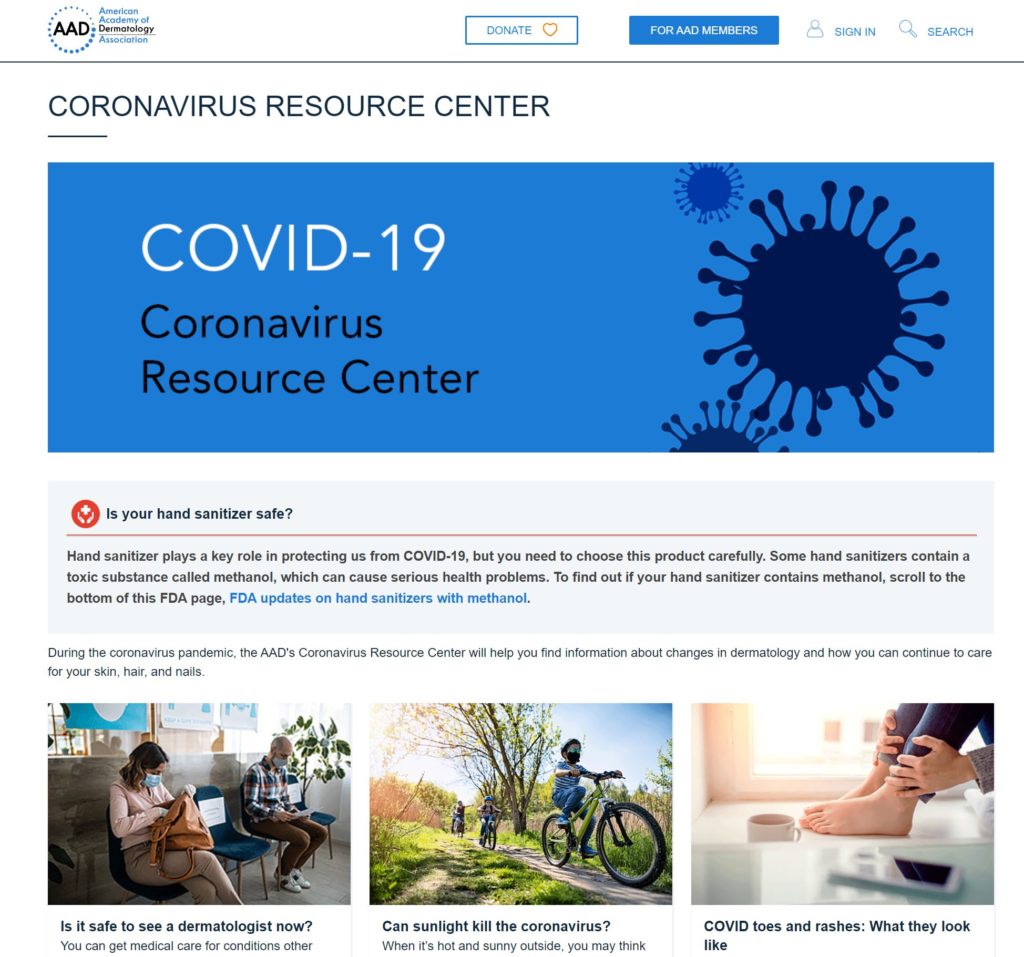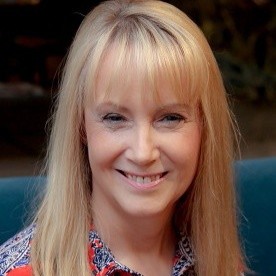
At the American Academy of Dermatology (AAD), we take our editorial calendar planning seriously. And we have a fairly stringent process we follow, requiring numerous layers of review and approval. But when the coronavirus pandemic hit, we had a realization. We had to put aside our carefully constructed plans so that we could rapidly shift content gears—and try new ways of doing things.
As an organization that develops medical content for dermatologists and other physicians, dermatology patients, and the public, our content has to be grounded in science. And our messaging must be consistent. In the past, needing to meet these standards has made us hesitant to change our content process.
But when we were forced to figure out how to produce consistent, timely, and credible content on the fly, we learned how to react to trends, collaborate across different digital mediums, and create new ways of presenting content to our users.
Here’s the process we used to successfully meet this challenge.
1. Figure out what information audiences need.
We knew we needed to understand what problems each of our audiences was facing and figure out how we could help, given the evidence-based content and subject-matter experts (board-certified dermatologists) we could draw from.
To begin, staff talked with each other. We then reached out to families, friends, and neighbors. Every morning, I reviewed the new articles that had been submitted to the peer-reviewed Journal of the American Academy of Dermatology. Other staff members watched what people were posting on social media channels, including our own. We spoke with member dermatologists. Everyone followed their news feeds.
From this research, trending topics quickly emerged. Dermatology patients had questions about their medications. Could they continue to take a medication that suppresses the immune system? How could they get a refill for an acne medication that required a face-to-face appointment with the prescribing dermatologist? Many people who were washing their hands and using hand sanitizer to avoid a coronavirus infection had developed excessively dry skin or a hand rash.
We realized that we already had evidence-based research (or new regulations) to address many concerns.
2. Get buy-in from leadership to move forward.
Given that we had viable content ideas, evidence-based research was available, and this topic was on everyone’s mind, we approached leadership with a proposal to develop a Coronavirus Resource Center for the public and one for members. The proposal outlined how our ideas aligned with our content goals and mission, so we quickly got approval.
3. Meet regularly to communicate and coordinate efforts.
With our offices closed due to the pandemic, meetings via Slack and video conferences became the norm. To publish consistent messaging across channels, we met weekly on Slack to give updates, ask colleagues for solutions to problems we faced, and discuss ideas.
We shared working drafts by email, and reviewers responded within days rather than weeks.. When reviewers and writers had a question, they Slacked the person who could likely provide the answer. With Slack notifications turned on, the recipient could respond in real time.
4. Follow breaking developments and update, update, update.
By March, we were seeing articles from Chinese and Italian dermatologists that suggested COVID-19 could affect the skin. Some patients had discolored and swollen toes, which later became known as COVID toes. Other patients had rashes on their flanks and elsewhere. By April, we knew that some children infected with the coronavirus developed a life-threatening condition that often included a rash.
Almost daily, knowledge about these signs and symptoms changes. Before publishing my article about COVID toes, I rewrote it four times. I’ve updated it twice since publication.
5. Stay current on regulations that affect your specialty and provide easy-to-use content for your audience.
Before the coronavirus pandemic closed dermatology offices, most dermatologists saw patients in their office. As offices began re-opening, telemedicine became an option. New policies about safety had been quickly drafted and took time to wade through. We delivered content about these changes in easy-to-understand content for both dermatologists and patients.
For example, to let patients know what dermatologists were doing to make their practices safe once offices reopened, I waded through hundreds of pages of safety regulations issued by the American Medical Association, the Centers for Disease Control, and others. I then transformed this information into an easy-to-understand post that shows the steps dermatologists were taking to keep their patients safe.
6. Use analytics to see what resonates with your audiences.
We’ve always used analytics to see what content resonates with our audiences. To my surprise, the analytics for the public content revealed that content about how to treat everyday conditions, such as sunburn and itchy skin, at home continued to draw the most visitors. Our unique coronavirus content was also attracting visitors, but the visits were fewer than expected. The timely COVID content had spikes in visitors, but those spikes didn’t add up to more than the steady traffic for our core evergreen topics.
Given the analytics, we’ve returned to our pre-approved editorial calendars. However, when a new coronavirus topic emerges that affects one of our audiences, we rush to cover it. This mix allows us to meet the content needs of our audiences and achieve key content goals never before realized.
Our Editorial Shift Paid Big Dividends
By stepping out of our comfort zone and taking risks, we were able to achieve content goals we never before thought possible. We now know that we can publish evidence-based content in weeks rather than months. This led to a significant increase in sponsorships (a company pays to have its logo appear on content pages without having any editorial control over the content). We also saw increased interest from media outlets, with some linking back to our pages.
Probably the biggest gain was reaching new people with our key message: Dermatologists treat serious medical conditions.
While visits to the public Coronavirus Resource Center were less than we expected, we have gained important insights about our content creation process during this crisis. We learned that we could shift focus quickly to meet the content needs of our audiences. We have also been able to showcase the expertise of dermatologists to new audiences.
So when you face new challenges, try to shift content gears. Chances are you’ll achieve even more than you expected. And you’ll definitely learn something along the way.
Events, Resources, + More
New Data: Content Ops + AI
Get the latest report from the world's largest study of content operations. Benchmarks, success factors, commentary, + more!
The Ultimate Guide to End-to-End Content
Discover why + how an end-to-end approach is critical in the age of AI with this comprehensive white paper.
The Content Advantage Book
The much-anticipated third edition of the highly rated book by Colleen Jones is available at book retailers worldwide. Learn more!
20 Signs of a Content Problem in a High-Stakes Initiative
Use this white paper to diagnose the problem so you can achieve the right solution faster.







Comments
We invite you to share your perspective in a constructive way. To comment, please sign in or register. Our moderating team will review all comments and may edit them for clarity. Our team also may delete comments that are off-topic or disrespectful. All postings become the property of
Content Science Review.